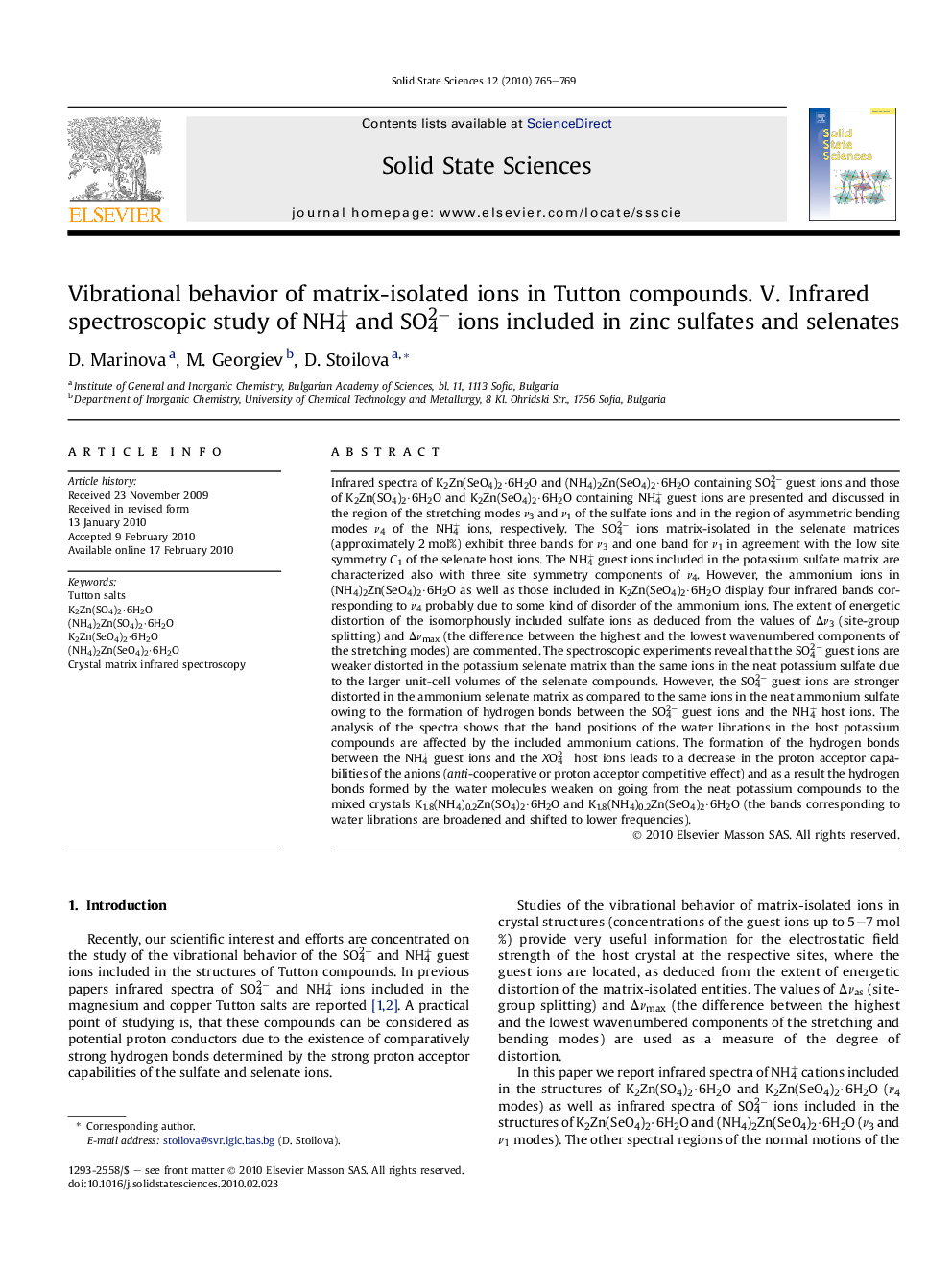| Article ID | Journal | Published Year | Pages | File Type |
|---|---|---|---|---|
| 1506021 | Solid State Sciences | 2010 | 5 Pages |
Infrared spectra of K2Zn(SeO4)2·6H2O and (NH4)2Zn(SeO4)2·6H2O containing SO42− guest ions and those of K2Zn(SO4)2·6H2O and K2Zn(SeO4)2·6H2O containing NH4+ guest ions are presented and discussed in the region of the stretching modes ν3 and ν1 of the sulfate ions and in the region of asymmetric bending modes ν4 of the NH4+ ions, respectively. The SO42− ions matrix-isolated in the selenate matrices (approximately 2 mol%) exhibit three bands for ν3 and one band for ν1 in agreement with the low site symmetry C1 of the selenate host ions. The NH4+ guest ions included in the potassium sulfate matrix are characterized also with three site symmetry components of ν4. However, the ammonium ions in (NH4)2Zn(SeO4)2·6H2O as well as those included in K2Zn(SeO4)2·6H2O display four infrared bands corresponding to ν4 probably due to some kind of disorder of the ammonium ions. The extent of energetic distortion of the isomorphously included sulfate ions as deduced from the values of Δν3 (site-group splitting) and Δνmax (the difference between the highest and the lowest wavenumbered components of the stretching modes) are commented. The spectroscopic experiments reveal that the SO42− guest ions are weaker distorted in the potassium selenate matrix than the same ions in the neat potassium sulfate due to the larger unit-cell volumes of the selenate compounds. However, the SO42− guest ions are stronger distorted in the ammonium selenate matrix as compared to the same ions in the neat ammonium sulfate owing to the formation of hydrogen bonds between the SO42− guest ions and the NH4+ host ions. The analysis of the spectra shows that the band positions of the water librations in the host potassium compounds are affected by the included ammonium cations. The formation of the hydrogen bonds between the NH4+ guest ions and the XO42− host ions leads to a decrease in the proton acceptor capabilities of the anions (anti-cooperative or proton acceptor competitive effect) and as a result the hydrogen bonds formed by the water molecules weaken on going from the neat potassium compounds to the mixed crystals K1.8(NH4)0.2Zn(SO4)2·6H2O and K1.8(NH4)0.2Zn(SeO4)2·6H2O (the bands corresponding to water librations are broadened and shifted to lower frequencies).
Graphical abstract(a) K2Zn(SeO4)2·6H2O; (b) (NH4)2Zn(SeO4)2·6H2OFigure optionsDownload full-size imageDownload as PowerPoint slide
